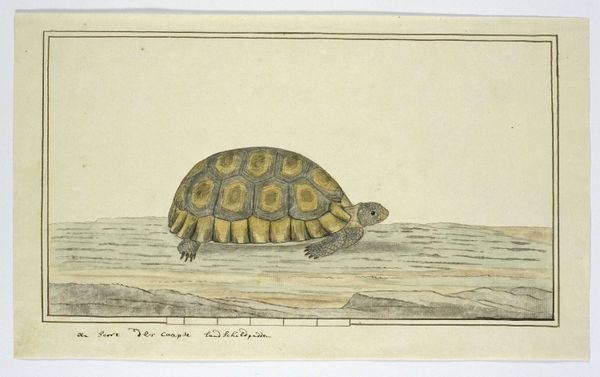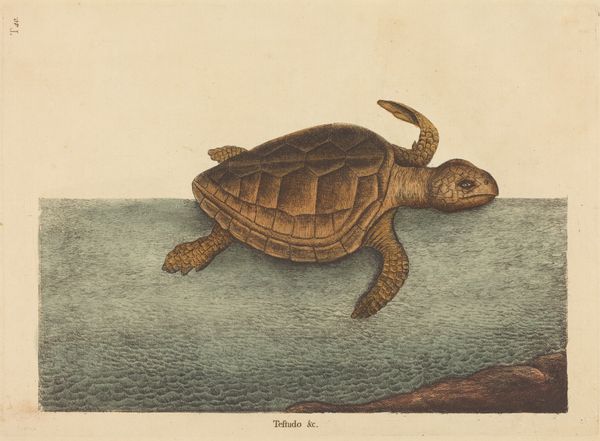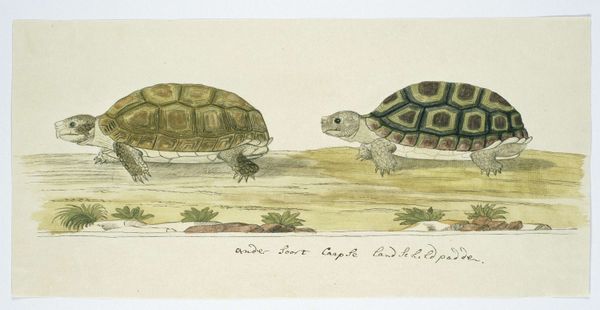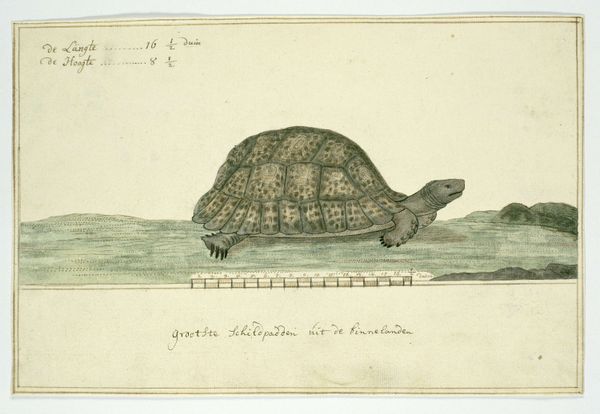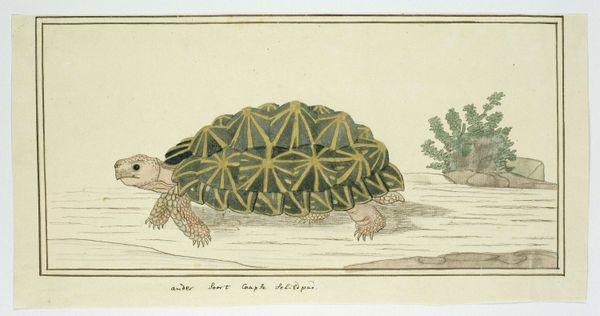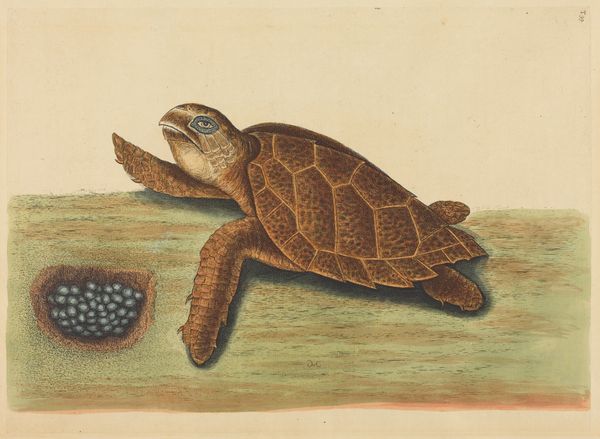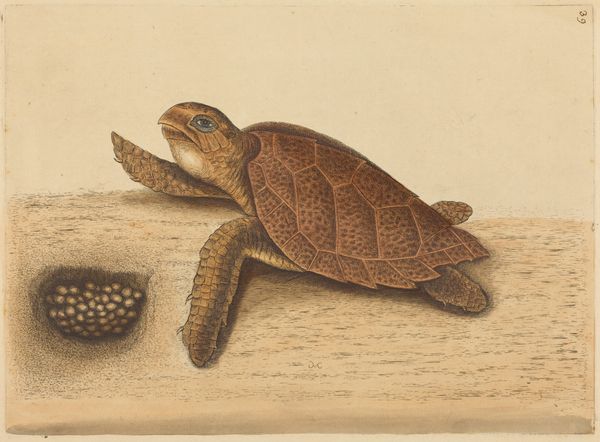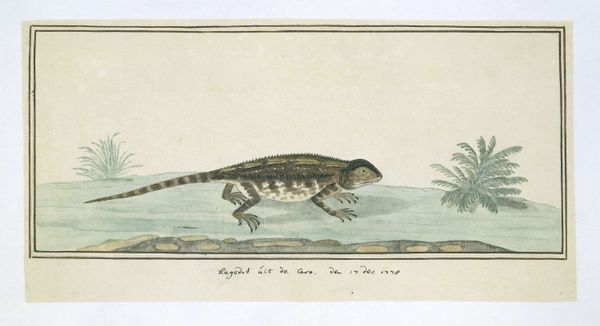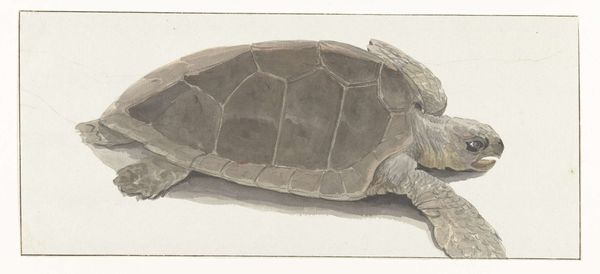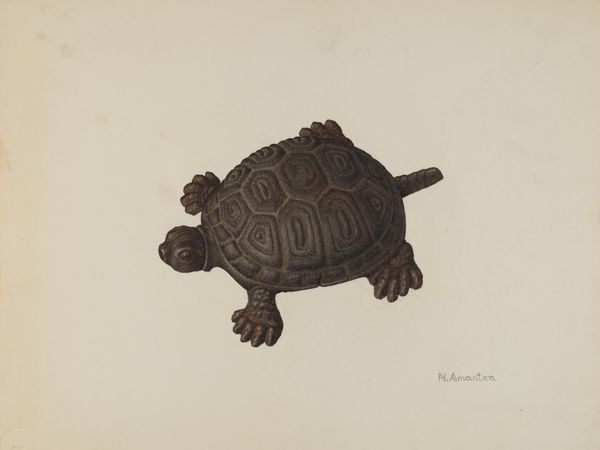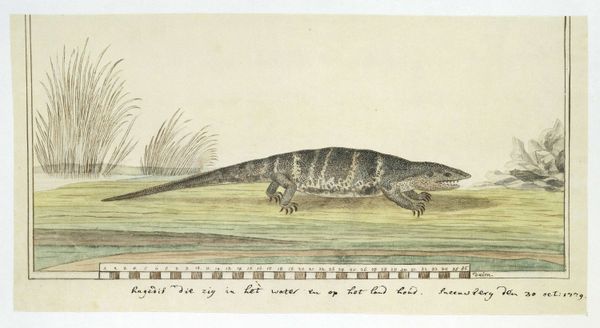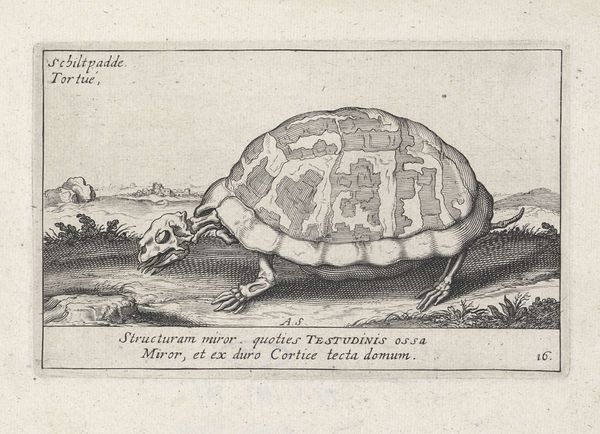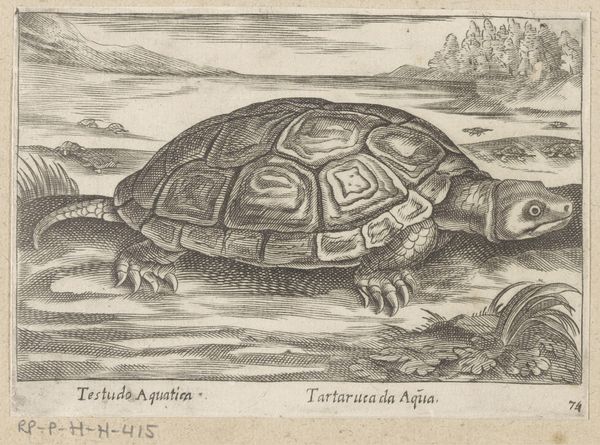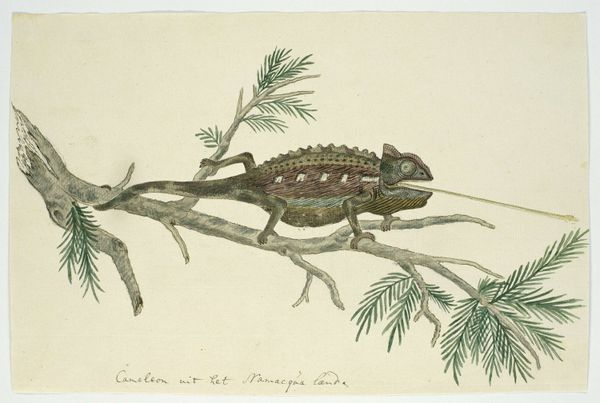
drawing, coloured-pencil, watercolor
#
drawing
#
coloured-pencil
#
landscape
#
watercolor
#
coloured pencil
#
watercolour illustration
#
naturalism
#
botanical art
Dimensions: height 660 mm, width 480 mm, height 189 mm, width 346 mm, height 150 mm, width 340 mm
Copyright: Rijks Museum: Open Domain
Editor: We’re looking at Robert Jacob Gordon's watercolor and colored pencil drawing, "Pelomedusa subrufa (African helmeted turtle)," possibly from between 1777 and 1786. I'm struck by how simply and precisely Gordon has captured the texture of the turtle's shell. What visual elements stand out to you in this work? Curator: The composition hinges on the tension between observation and representation. Notice the formal structure: the horizontal lines of the water bisecting the page, grounding the central form of the turtle. This creates a subtle, almost mathematical, harmony. How does the coloring contribute to this structural understanding? Editor: It seems to me the muted palette – the subtle gradations of grey and brown – lends the piece a kind of analytical coolness, as though Gordon is striving for objectivity. Do you think this piece leans toward detached observation? Curator: Precisely. The limited palette, verging on monochromatic, draws our attention to form and texture. Look closely at how Gordon uses light and shadow to define the carapace, creating a tactile sense of volume and mass. Consider also the orientation, where it stares outward and seemingly acknowledging its presence as both artistic artifact and organic structure. Editor: I hadn’t considered the interaction between color and form so explicitly. The rendering is meticulously factual while retaining something organic and lifelike in the animal’s posture. Curator: Note, too, the economy of line. Gordon eschews dramatic flourishes, opting instead for precise contours that delineate the turtle's form. This, combined with the carefully chosen color palette, constructs the artwork as an object of analytical observation. Editor: I now appreciate how the elements, the simple horizontal water lines and the tonal restraint, converge to make the image as informative as possible. The artistry derives from a kind of objectivity. Curator: Indeed, it compels us to reconsider how ostensibly representational forms may manifest formal significance in unforeseen ways.
Comments
No comments
Be the first to comment and join the conversation on the ultimate creative platform.
